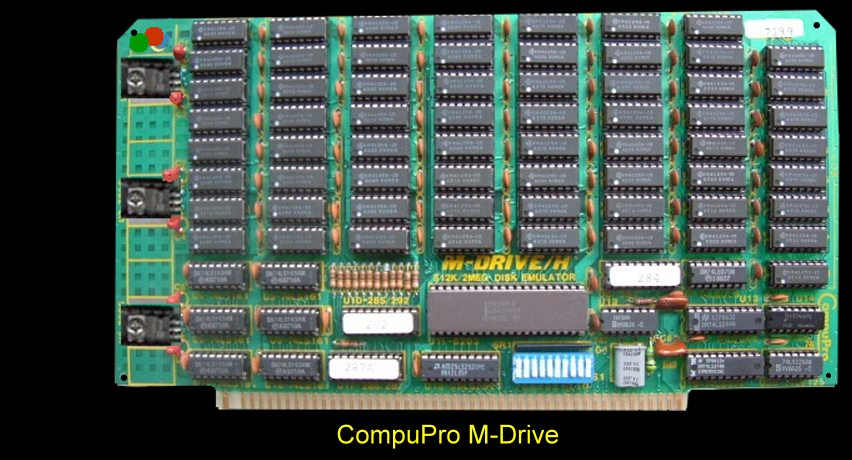
CompuPro - M-Drive
Towards the end of the S-100 bus era
"memory disks" became popular. They were equivalent in some respect to today's
flash drives. One of the first came from CompuPro the M-Drive.

The M-Drive consisted of 512k bytes of
dynamic RAM, a dynamic RAM controller circuit and a method for addressing the
data in the RAM array. The M-Drive/H looks like two I/O ports to the system
bus, it takes up no memory space. One I/O port was used to load a starting
address into the board, and the other was used to read and write data. The
starting address is actually loaded into a series of counters on the board, and
bytes are then transferred in sequence without the need to send a new address
for each byte. The counters automatically increment themselves to
point to the next byte. This speeds up transfers considerably. The
counter has 22 bits, 3 more than are needed for 512K bytes. These extra three
bits determine which board of eight should send or receive the data. Thus,
the array seems to the software like a contiguous 4 megabytes, instead
of eight separate chunks of 512k bytes each. This made the
programming task quite a bit easier, as well as using a minimum
of port addresses. The dynamic RAM controller circuit consists of an Intel
8203-3 dynamic RAM controller and some external logic to permit operation with
512K of RAM. This circuit handles most of the DRAM access functions, as well as
providing the necessary refresh operation and arbitration. Since the
DRAM is isolated from the IEEE 696/S-100 bus, problems normally associated with
DRAM and the S-100 bus are avoided.
The manual for this board can be
obtained here.
This page was last modified
on
01/08/2011


